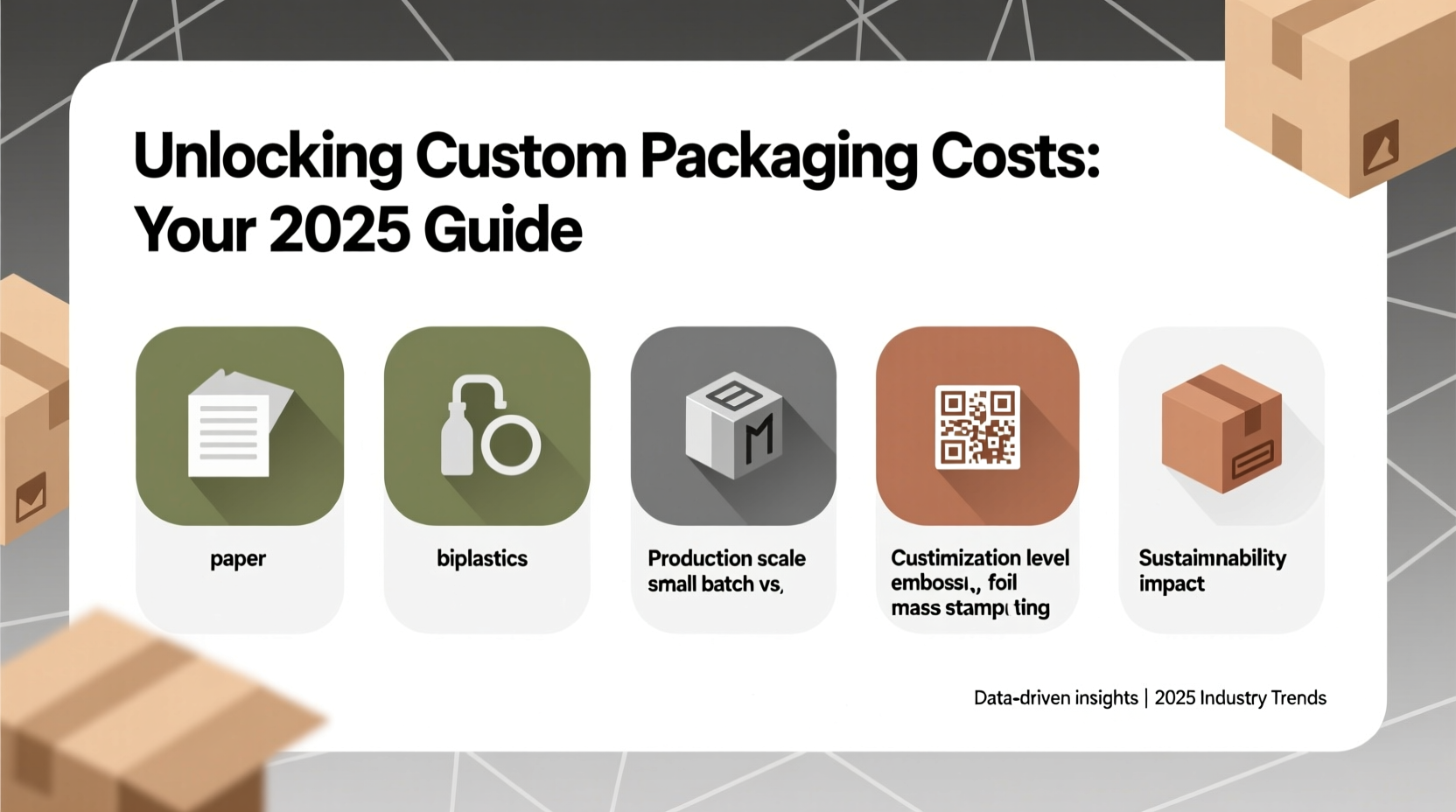Custom Packaging: A Key Element in E-Commerce Success
In the vibrant world of modern e-commerce, custom packaging serves as a pivotal tool for businesses striving to make a lasting impression. Whether catering to luxury items, groceries, or tech gadgets, the choice of packaging can significantly influence a brand’s perception. A prevalent query among entrepreneurs revolves around the cost of custom packaging—a topic far from straightforward due to the multifaceted factors at play. This comprehensive guide will explore these elements, offering insights into estimating the cost effectively.
Decoding the Costs of Custom Packaging
Understanding the various factors influencing custom packaging costs is essential for businesses aiming to optimize their investments. From the type of packaging to the materials utilized, every aspect contributes uniquely to the overall expense.
Types of Packaging Options
Packaging choices abound, each with distinct cost implications. Whether opting for standard boxes, custom bags, or elegant bottles and jars, the decision profoundly impacts pricing:
- Boxes: Cardboard boxes are popular for their affordability and adaptability, but features like reinforced corners or custom cutouts can increase costs significantly.
- Bags: Available in paper, plastic, and fabric, the cost varies based on material and print technique, ranging from digital to foil stamping.
- Bottles and Jars: Perfect for premium products, glass or plastic containers come at a higher price due to material and manufacturing intricacies.
Material Choices
Material selection is a cornerstone of custom packaging costs. While sustainable options are favored, they typically cost more than conventional materials. Here’s a breakdown:
| Material | Estimated Cost per Unit |
|---|---|
| Paper and Cardboard | $0.10 to $0.50 |
| Plastic (PET/HDPE) | $0.20+ |
| Glass | $0.50 to $2.00 |
| Metal | $0.75 to $2.00 |
Design Complexity
The intricacies of design directly correlate with costs. Simple designs are more economical, while elaborate prints featuring multiple colors or advanced techniques can substantially inflate expenses. A straightforward box might cost $0.25 per unit, whereas a custom-designed box could exceed $1.00.
Order Quantity and Economies of Scale
Quantity plays a vital role in determining unit costs. Larger orders reduce per-unit expenses, with recommended ranges:
- Small orders (100-500 units): $0.50-$1.50 per unit
- Medium orders (500-2,000 units): $0.30-$1.00 per unit
- Large orders (2,000+ units): $0.20-$0.80 per unit
Shipping and Logistics Considerations
Transportation costs significantly impact the overall expense of custom packaging. Local suppliers typically offer lower rates compared to international ones, which may add customs fees and longer delivery times. Understanding logistics helps ensure accurate cost estimation.
Strategies to Minimize Custom Packaging Costs
Cost reduction does not equate to compromised quality. Businesses can adopt strategic approaches to achieve cost-efficient packaging solutions without losing brand essence or consumer appeal. Here, we explore actionable tips to effectively manage packaging budgets:
Simplifying Design Elements
A straightforward method to reduce costs is by simplifying design elements. Complex designs demand extra production steps, increasing costs. Opt for minimalistic aesthetics that effectively convey brand messages without superfluous embellishments.
Choosing Cost-Effective Materials
While premium materials elevate product value, they also elevate costs. Alternatives like paper or cardboard are affordable and versatile, meeting eco-friendly standards without breaking the bank. Recycled or biodegradable options enhance consumer appeal.
Bulk Ordering Benefits
Economies of scale offer substantial savings. Larger orders benefit from reduced per-unit production costs. Suppliers often provide discounts for bulk purchases, making accurate demand forecasts crucial to avoid waste.
Leveraging Pre-Made Templates
Utilizing pre-designed templates can lower costs by eliminating the need for custom design work. Simple customization ensures brand identity without significant expense, saving both time and resources.
Exploring Diverse Printing Techniques
Printing methods substantially influence costs. Digital printing, with its cost-effectiveness for smaller runs, may be a suitable alternative to traditional techniques. Balancing quality and budget is essential.
Negotiating Supplier Terms
Open communication with suppliers can yield favorable pricing. Relationships and regular contract reviews foster opportunities for savings, enhancing supply chain efficiency.
Conclusion: Crafting Cost-Effective Packaging Solutions
Investing in custom packaging is a strategic endeavor that enhances brand visibility and consumer satisfaction. By carefully evaluating packaging type, material choices, design complexity, and order quantities, businesses can make informed decisions. Integrating cost-effective strategies ensures a balance between quality and budgetary constraints, ultimately achieving standout packaging in a competitive market.
For navigating the complexities of custom packaging, resources like Accio.com offer valuable support with real-time data and AI-driven insights.











 浙公网安备
33010002000092号
浙公网安备
33010002000092号 浙B2-20120091-4
浙B2-20120091-4